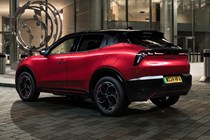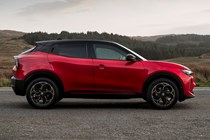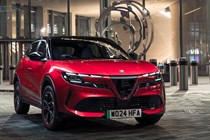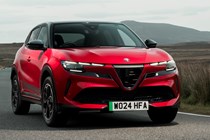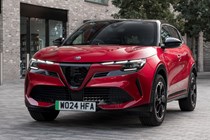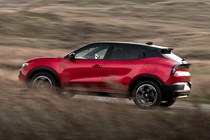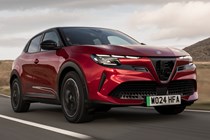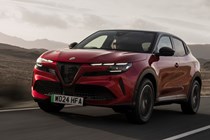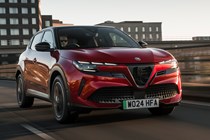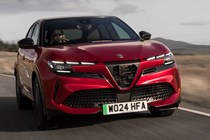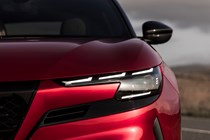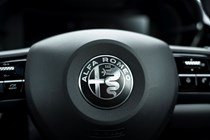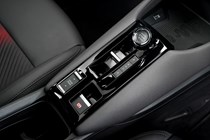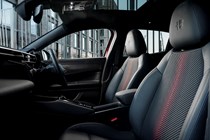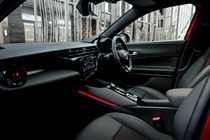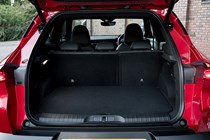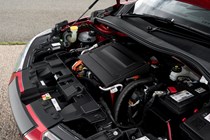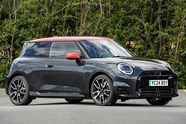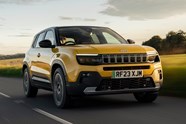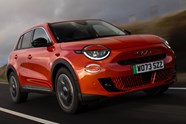
Alfa Romeo Junior review
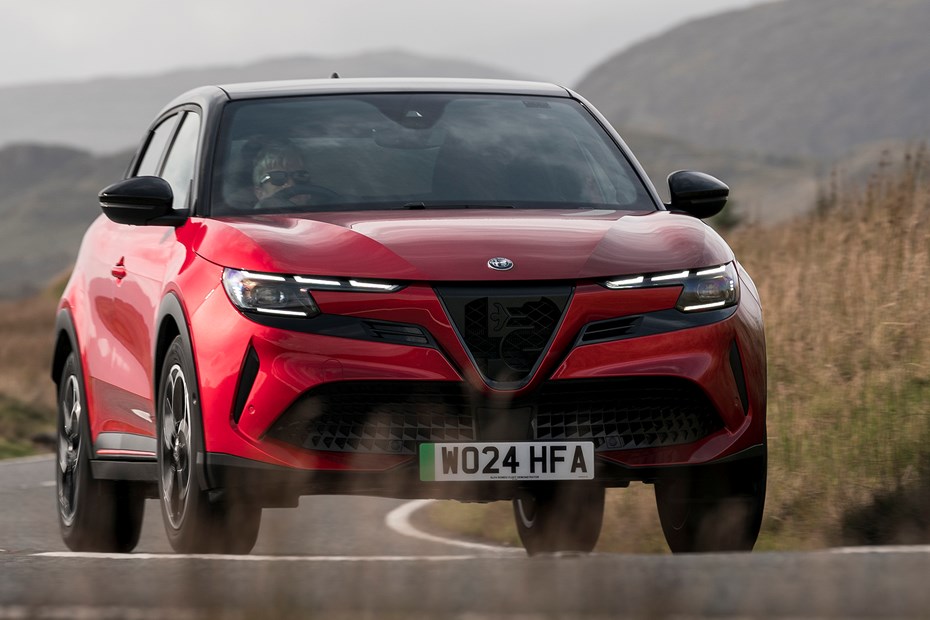
At a glance
| Price new | £33,905 - £38,840 |
|---|---|
| Used prices | £24,906 - £32,780 |
| Road tax cost | £195 |
| Insurance group | 23 |
Get an insurance quote with

|
|
| Fuel economy | 4 - 4.1 miles/kWh |
| Range | 247 - 255 miles |
| Miles per pound | 6.3 - 12.1 |
| Number of doors | 5 |
| View full specs for a specific version | |
Available fuel types
Fully electric
Pros & cons
- Eye-catching styling
- Mostly good handling and ride
- Competitive luggage space
- Cramped rear seats
- Interior feels weak
- Braking response not great
Alfa Romeo Junior SUV rivals
Overview
The Alfa Romeo Junior is the first electric car from this iconic Italian marque, and it certainly won’t be the last. After this it’s all electric – next year the Stelvio is going EV and in 2026 we’ll have a battery-powered version of the Giulia saloon.
Alfa Romeo is platform sharing again too. The Junior uses the same underpinnings as the Jeep Avenger, Vauxhall Moka and Fiat 600e among others, but Alfa’s Centro Stile design bods are confident the Junior is different enough inside and out.
It will come with three powertrains – the standard 155hp model driven here, a hotter 280hp Junior Veloce with a trick limited slip differential, and later a hybrid version. The latter wasn’t confirmed for the UK at launch, but Alfa Romeo has subsequently decided it’s coming here too. It was a similar story for the Jeep Avenger, which is now available in petrol and mild hybrid – as well as EV.
Measuring 4.17m long, 1.5m high and 1.78m wide, the Junior fits firmly into the small family SUV sector, but brings with it a distinctive style. Alfa says it echoes the old Giulia TZ and the 33 Stradale if you’re being particularly optimistic. Either way, on the outside at least it looks and feels fresh and sophisticated.
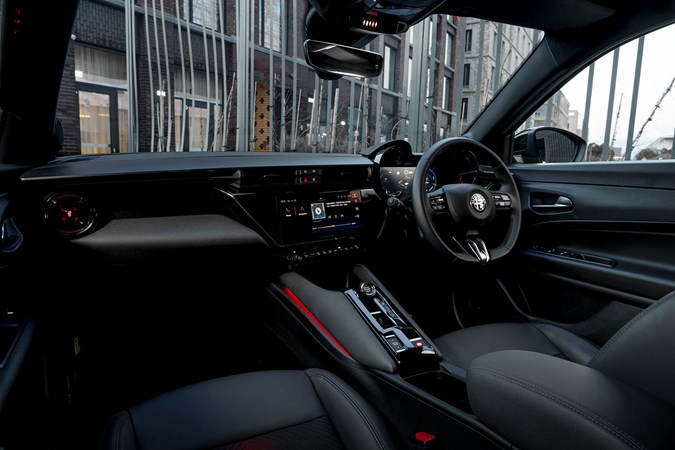
What’s it like inside?
Alfa’s designers have continued to draw on the brand’s rich heritage for the interior. Inside, the driver benefits from a ‘telescopic’ binnacle – an Alfa design signature – and there’s also a 10.25-inch screen. The rest of the cabin is different from the other e-CMP2 cars: air vents sited above another 10.25-inch TFT screen for the infotainment bits, but the whole thing is angled toward the driver.
Look further below and you’ll find – hurrah! – physical switches for the air conditioning and other features. While not as glamorous as the touchscreen solutions we’ve seen on other EVs, we certainly appreciate that the firm’s designers have stuck to this more traditional approach. Stellantis anoraks will recognise most of the Junior’s switchgear, but we think they work well in the Alfa.
Our main issue? The Alfa’s cabin feels a little cheap. Surfaces such as the door cards and dashboard are made from tough, hard-wearing plastic, and they betray Stellantis’ cost-cutting measures. It’s a shame, because the interior in the Alfa is designed well, and looks as though it should feel a bit more premium than it is. You get Alcantara and some nicer touches with the Veloce, but it’s quite a bit more expensive.
Looking back, the rear passengers have a snug fit, so I was barely able to sit behind myself. Behind the second row, the 400-litre boot is competitively sized, and big enough for a few cabin bags or a big shop.
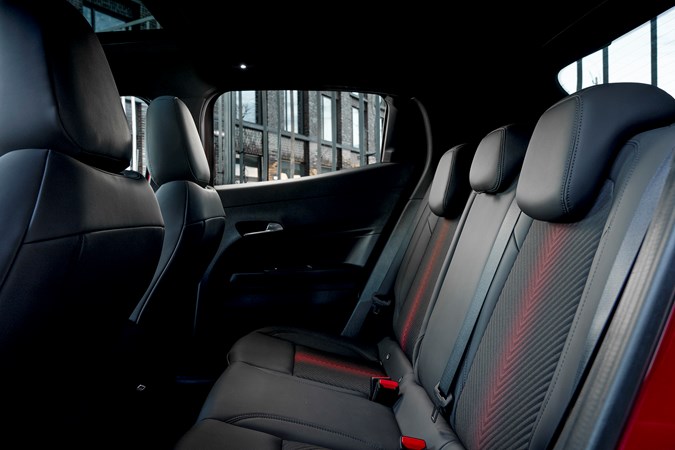
Alfa Romeo Junior power options
The Veloce will come in three separate powertrains: the ‘entry-level’ electric 155hp car reviewed here, a faster EV called the Veloce and a newly announced hybrid version to follow in the UK next year. The base Junior we’re driving here uses a 54kWh and electric motor for a 0-62mph time of 9.0 seconds, though as you’d expect it’s quick to hit 30mph.
For those interested, the 280hp Veloce will hit 62mph in just 5.9 seconds. Top speed is 93mph and torque is rated at 192lb ft for this car. There are also two trims of the basic model, a standard Elettrica trim and a Speciale trim with more kit.
Range and charging
Alfa Romeo quotes a WLTP driving range of 255 miles, with fast-charging from 10 to 80% taking just 30 minutes on more powerful chargers. We’ve not driven the car at length but would expect something closer to 230 miles given our experience with other cars based on this platform.
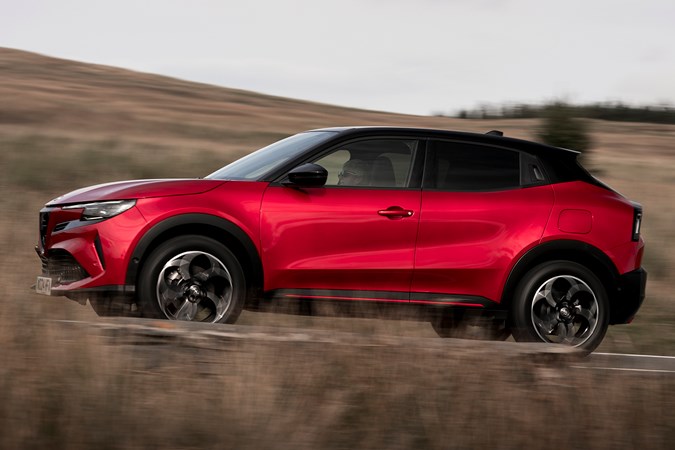
What it’s like to drive?
On the surface, the Junior gives everything you’d expect from an affordable Alfa Romeo EV. It feels slightly sharper than its siblings such as the Jeep Avenger and the ride is refined too. Steering isn’t as quick nor as precise as something like the Stelvio or Tonale but it’s easy to use and more engaging than some of its rivals.
Our car handled most of the bumps the Midlands-based test route, but steer into a corner, and you’ll find the Junior’s comfortable ride hasn’t come at the expense of dynamics or body roll. That’s partly because it tips the scales at 1,560kg – it’s a relative lightweight for an EV. It feels quick away from the lights, but by the time it’s hit 60mph it’s already running out of breath. Luckily, it’s acceptable for running at UK motorway speeds.
The bad bits? The Junior’s braking system, which like many EV’s blends regenerative braking with an old fashioned hydraulic system. On some cars it’s blended well and feels like one complete system – not so on the Alfa. Here, the top regenerative part of the pedal feels hopelessly weak, so you find yourself stamping on the anchors to get to the real brakes.
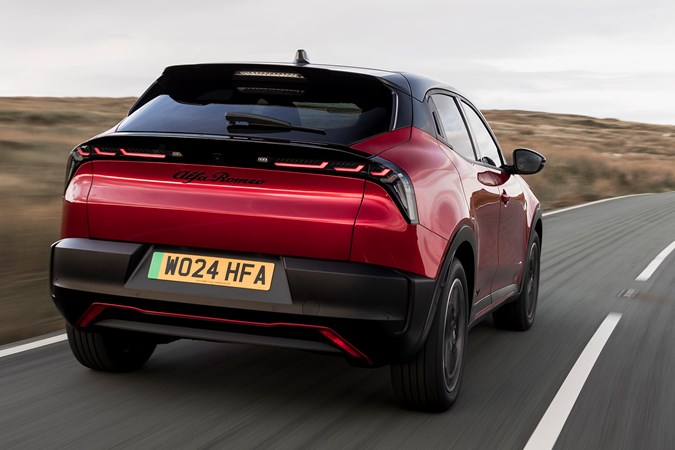
We’ve seen this on several EVs, including the Jeep Avenger this car shares a platform with, but the Alfa’s superior handling elsewhere makes it more noticeable. We did find a workaround though – in B-mode, with higher regeneration, the switchover is less pronounced.
In the performance-focused Junior Veloce and Abarth 600e, regenerative braking isn’t enabled in the quicker modes. Funny that…
What models and trims are available?
The Alfa Romeo electric comes in three tiers right now: the entry-level Elettrica, the Speciale (which uses the same 155hp powertrain), and the performance focused Veloce. The hybrid will join in 2025 and should start around £24,000, if our experience with the Jeep Avenger is anything to go by. That’s around a £10,000 undercut. Food for thought.
For a couple extra grand over the base EV, the Speciale adds tinted rear windows, six speakers rather than four and nicer seats. There’s also a reversing camera and a leather steering wheel. Inside there’s lane-keeping and traffic jam assistance but there’s also an 11kW onboard charging system rather than a 7kW one.
Alongside the extra power, the Veloce gets a nicer interior and more tech.
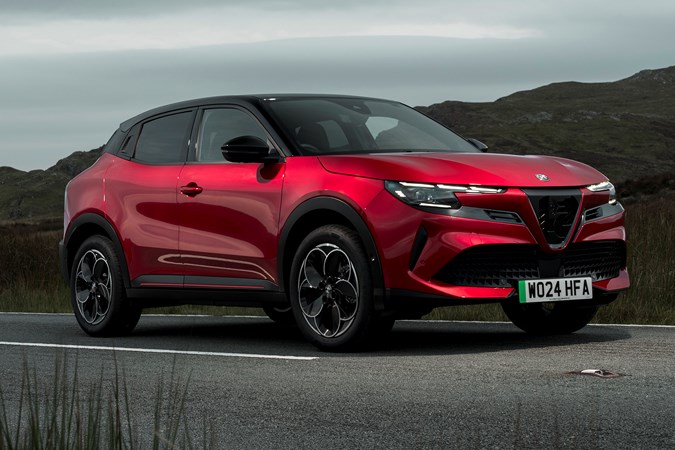
What else should I know?
The Alfa Romeo Junior shares its 155hp powertrain with the Fiat 600e and Jeep Avenger, and both are worth a look. Abarth takes the Fiat 600e and adds more power and better specs so there’s a 245hp version and an even faster, but limited-edition, Scorpionissima version with a Veloce-matching 280hp. All of the cars above have slightly nicer interiors than the Alfa, as even in the base models the cost-cutting is less obvious.
Read on for the full Parkers verdict. And if you’d like to learn more about how we reached our verdict on the car, check out our how we test cars explainer page.



